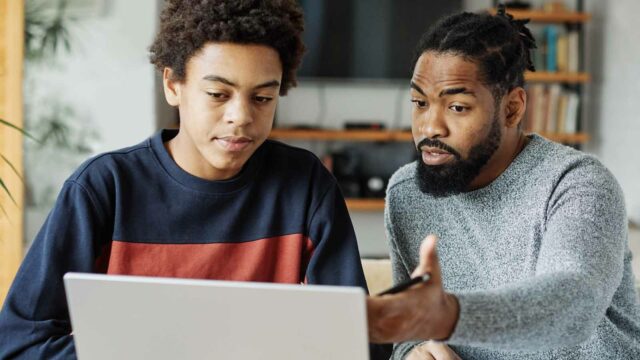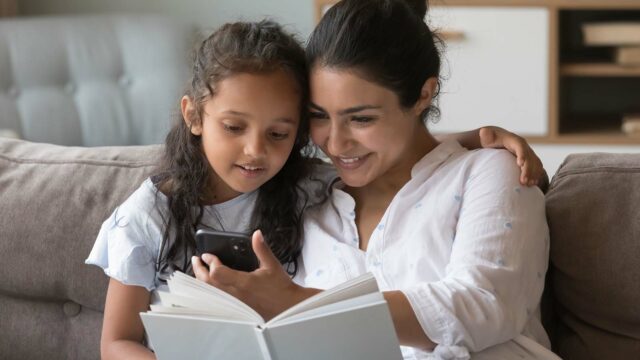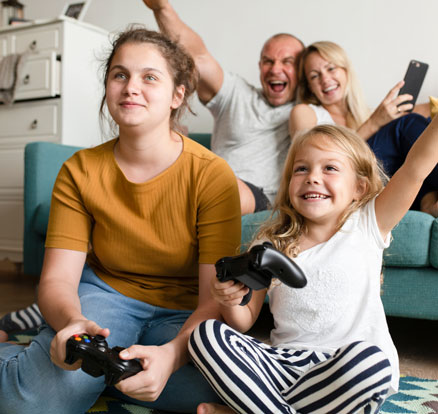
Children’s media use: How school and home can work together
Social media and games have become a continuation of the friendship in the schoolyard. What is needed for children to thrive digitally? And what school and home should do to collaborate?
Choose language in the Google-box below. Some translations may be flawed or inaccurate.
Text: Kjellaug Tonheim Tønnesen and Kris Munthe
NORWAY: Digital judgement is about exercising good attitudes and making smart choices online. The school has a responsibility to put the topic on the schedule. However, it is perhaps in their spare time that the pupils spend most of their time online, in games, and on social media.
In order for children and young people to develop digital judgement, schools and homes should work together. It can be anything from creating an arena where parents can share experiences and challenges about setting boundaries, to talking together about how to address conflicts that arise between students.
Judgement is the understanding of how knowledge and skills can be applied to new situations that arise, in order to perform a good action. When it is exercised in the digital world, we call it digital judgement. (Source: Children and young people’s digital judgement, Barnevakten 2020)
In connection with the work on Barnevakten’s teacher training course, 166 teachers answered how they managed to achieve the school-home collaboration. Experience shows that this is not always easy:
- Only 5 percent of teachers say that it is easy to achieve good school-home cooperation.
- 40 percent say it’s challenging.
- 47 percent say it varies from class to class.
Therefore, these are some important reflection questions for teachers and parents:
- How can teachers help parents engage more with their children’s digital world?
- How can parents of a class achieve good collaborations around their children’s media use?
- How can parents and teachers work together on challenging issues related to their children’s Internet use?
Whether you are involved with FAU (parent-teacher association), class contact, teacher, or parent, we want to give you some concrete tips and advice on what school and home can collaborate on when it comes to children’s media use. The initiative can just as easily come from the parents as from the school. The latter admittedly has a special responsibility to be a driving force in this work. School can also be an arena where parents are updated on the knowledge they need at the bottom to be able to set the relevant and good framework for their children’s media use.
Barnevakten’s survey Skjermet barndom?, 2020 showed that parents wanted concrete and clear advice related to screen time, age limits, and the practice of rules regarding children’s screen use.
They also wanted concrete knowledge about security, filters, and smart settings. And they want to know more about the effects of screen use.
Get “netiquette” on the agenda early
If you start talking only when a problem has arisen in the fourth or fifth grade, you are a little too late. Children’s use of media should be a fixed topic on the agenda from the very first step.
Here, the parent meetings are valuable focal points. If nothing else, it’s nice to give space and time for parents to talk about media-related joys and challenges at every parent meeting.
As a teacher, you can invite parents to report issues that should be raised at parent meetings. Conversely, you don’t have to be afraid as a parent to report something you want to discuss in the parent group. Reporting it to the teacher who sets it up as a case can be more beneficial than having to take the floor and run the case in the parent meeting. It can make it easier for everyone to discuss a topic on an equal footing, and it is also more beneficial, especially for older students who often find it complicated that their own parents face issues around which there are different opinions and practices.
What is the role of the teacher?
The teacher should not appear as a “netiquette expert” at the parent meeting. Rather the teacher should facilitate good conversations on important and relevant issues that apply to most houses.
The teacher’s most important role is to put the topic on the agenda and make room for parents to talk to each other. It is also important to facilitate an environment for the parents where they show each other respect even when they disagree with the views and practices of others. There will always be extremes in the parent group and different opinions, and in addition, there are few definitive answers to the issue of children and media use.
The fact that parents can report cases “anonymously” in advance of the meeting can be a way of reassuring someone. Discussion questions and dialogue in groups can be another way to allow more voices. Here, the teacher does not have to reinvent the wheel. Several non-profit organizations and government agencies are developing models and resources for how schools and homes can strengthen collaboration on digital media and digital judgement.
This can be found on the barnevakten.no/skole where you can search for resources for parent meetings.
What can be discussed at the parent meeting?
In addition to specific topics that are relevant to your class or parent group, here we will present some relevant issues that can be discussed at the parent meetings:
The first school years
- Child’s first mobile. Exchange of experience. When should kids get a mobile phone? Brand pressure (do kids have to have the most expensive mobile?). Does this create buying pressure for the others in the class? Other rules for mobile use.
- Parent group on Facebook – what issues can parents raise here? What can’t be discussed (cases involving individual students/complaining, derogatory talk about school and teachers, etc.)? Who should be the admin of the group and should that task be changed on a regular basis?
- Events where parents can meet and get to know each other. It is easier to address challenges between students if you have met the other parents first.
- This is how you can start a parenting group on social media.
Age Limits
- Age limits on games and social media. Is it important to comply with age limits? Why or why not? How should you relate to the age limit?
- Are there any apps and games that can be good and educational for kids? Are there any to avoid?
- What do we think about age limits on movies and TV series that children watch together for birthdays and during visits with friends?
- “Everyone else has, and everyone else is allowed” – is that true? And how to reduce pressure? Is there anything we can agree on as a common framework?
Conflict and inclusion
- How to address conflicts between students that arise online? How to solve things at the lowest possible level? And if so, when should the school be involved? How to contact other parents/schools in a good way?
- A good online friend. How can parents encourage their own children to exercise good attitudes towards their peers in games and social media?
- All included. How to make sure everyone has someone to be with, including online. Should you organize groups of friends online, for example?
- What is cyberbullying? The importance of parents talking about this at home to prevent cyberbullying. And how should we as adults handle this if bullying cases happen online and in games?
Time Limits
- Time limits. Exchange of experience. How can gaming and online time spending be regulated in different homes? Are there any good tips? What about screen time and sleep and screens in the bedroom after bedtime? Will it be useful to have a common framework for a log-out time in the evenings?
- Shared offline time. Can you plan joint screen-free time to make it easier for children to meet physically off-screen?
Parent Involvement
- Voluntary work by the parents. How can parents get more involved in what their children do online? Game nights organized by parents, chat groups where adults also participate, etc.
- Parents as role models. How can the parents themselves appear as good role models for the children? What pictures can you share of your own children, birthdays where fellow students are present, class parties, and other events?
- How can parents gain insight into what their children are doing on their screens? How do you balance the requirements of the Convention on the Rights of the Child: the boundary between the child’s right to privacy and the child’s right to protection?
- Netiquette conversation at home. What should parents talk about with their children?
Class Snapchat Group
- As a rule, the class has its own social media group where they can chat with each other. What can parents do to ensure that communication between the students is as good as possible? What rules are important in such a chat group? How to ensure that everyone gets involved?
- What about those who don’t have social media and don’t participate in the group?
Security & Privacy
- Password sharing. How to ensure accounts are kept private and secure.
- Photo sharing. What is allowed and what is not? How to talk to children about managing boundaries for themselves and others.
Foto: Matej Kastelic / Shutterstock
(Translated from Norwegian by Ratan Samadder)










